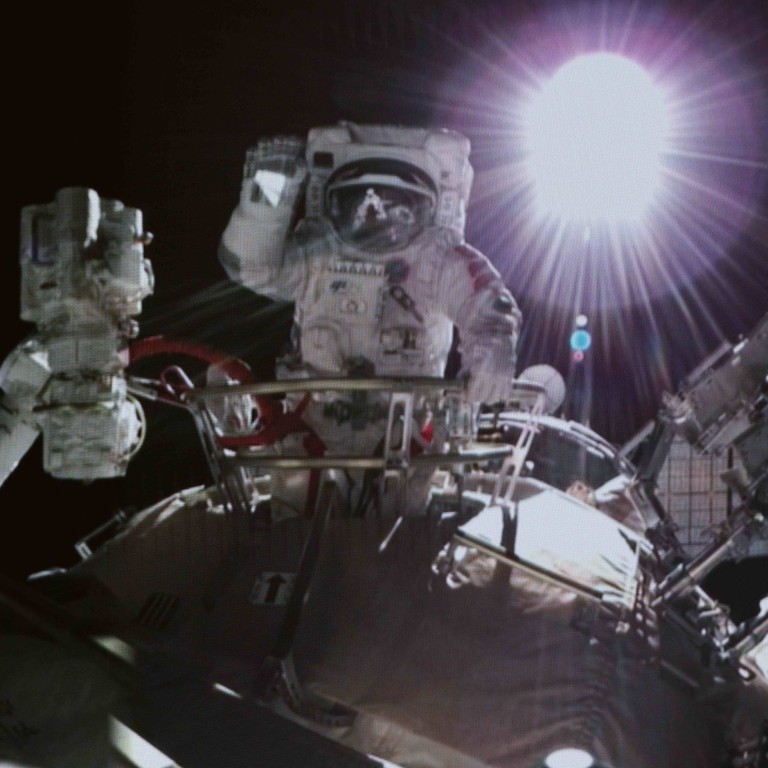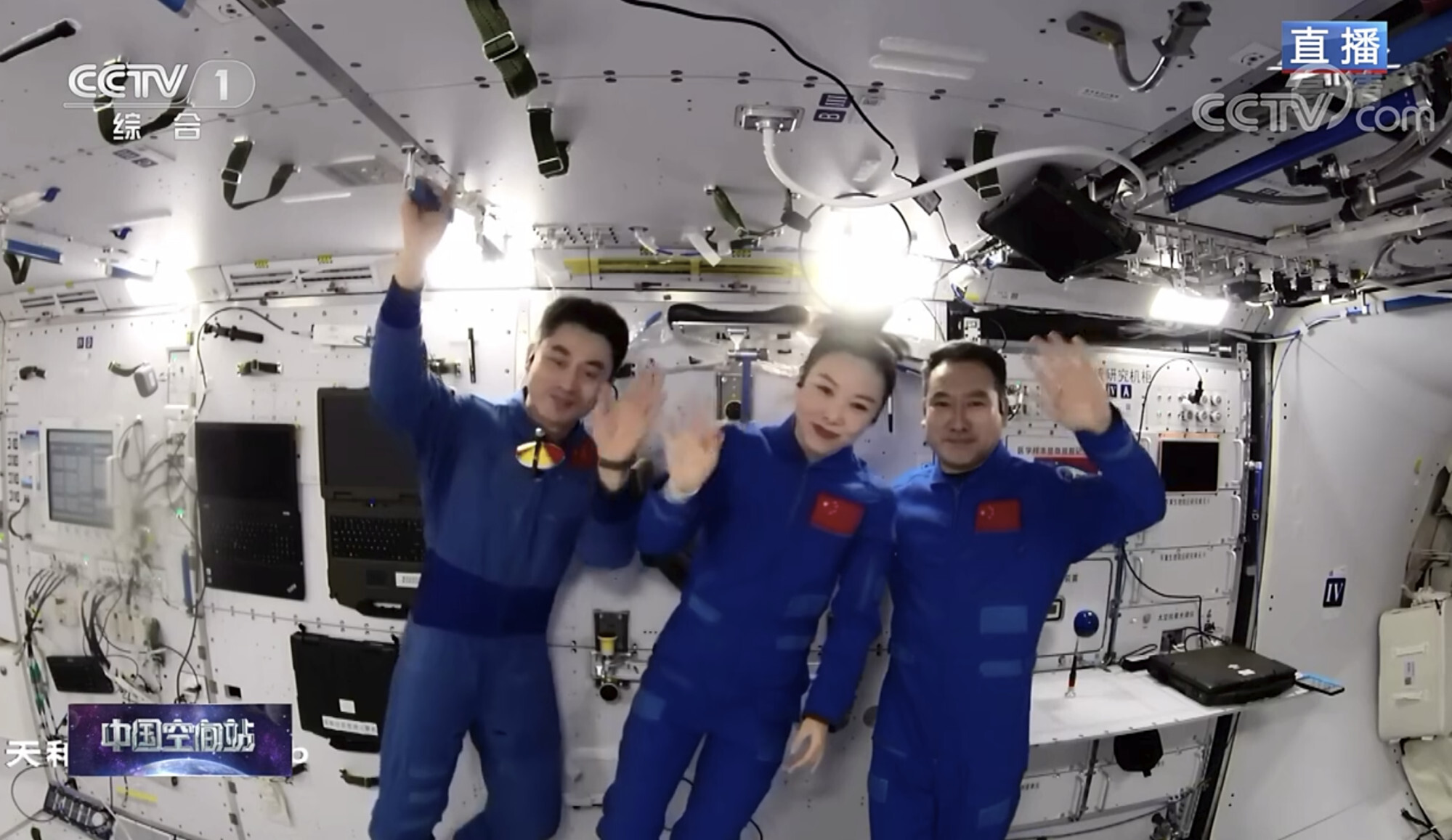
Lift-off for China’s space ambitions of launching 2 crewed missions a year for a decade
- Space engineering chief says two cargo spacecraft will go up annually over the next decade as well
- Plans are also afoot for a space station telescope to scan the skies
“The initial plan is to launch two manned spacecraft and two cargo spacecraft each year, with astronauts staying in orbit for longer periods to conduct space science and technical experiments,” Hao said.
Beijing plans to launch the Tianzhou 4 cargo spacecraft next month and the Shenzhou 14 in June, as well as send up two laboratory modules for the Tiangong – the Wentian in July and the Mengtian in October.
The Wentian and the Mengtian modules will be attached to the space station’s core to complete the T-shaped formation.
Han said the Tianzhou 5 cargo spacecraft and the Shenzhou 15 crewed mission would also lift off later this year.
Like the Shenzhou 14, the Shenzhou 15 will have three astronauts who will work and live in orbit for six months.
Crews for the next two missions were already in training, said Huang Weifen, chief designer at the China Manned Space Agency. But their names have yet to be announced.
On Saturday, the Shenzhou 13 capsule returned to Earth with its crew of one woman and two men, who almost doubled the nation’s previous longest stay in orbit.
They were the second crew to live and work on the Chinese space station.

Hao said that over the next 10 years, China would also develop its next generation of manned launch vehicles and manned spacecraft with reusable return capsules.
The next generation of spacecraft is being designed to carry seven astronauts and will have major improvements to the loads it can take up and bring back, according to the engineering office.
Hao also said the Tiangong space station would be used for a bigger scale of experiments and research, ranging from space life sciences research, to investigations into microgravity physical science, space astronomy and Earth science.
One of the highlights will be the planned launch of the space station’s first large telescope next year, a sophisticated device that will operate as a space optical observatory for Chinese scientists to carry out sky surveys.
The wide field of view will allow the telescope to observe up to 40 per cent of the sky over 10 years using a huge 2.5 billion-pixel camera.
It will co-orbit Earth with the Chinese space station and be able to periodically dock with the future crewed outpost.
Hao said authorities would also explore the potential use of private capital in the manned missions, particularly the construction and maintenance of the space station.
Asked whether international tensions would affect the cooperation between China and other countries, including Russia, Hao said Beijing adhered to the principles of peaceful use, equality and mutual benefit, and common development, and would explore the use of outer space with all countries.
In a visit to the Wenchang Space Launch Site on the southern island province of Hainan on Tuesday, President Xi Jinping called for efforts to attain “world-leading standards” for China’s spacecraft launch facilities, state news agency Xinhua reported.
The Wenchang centre is regarded as the home base of China’s space station and has played a key role in launching heavy loads, including the Tiangong’s core module.
It is preparing for the launch of the Tianzhou 4 to continue the construction of the Tiangong.



